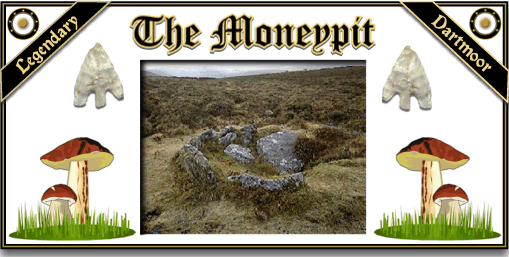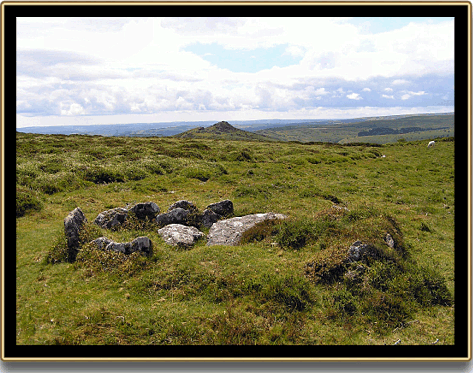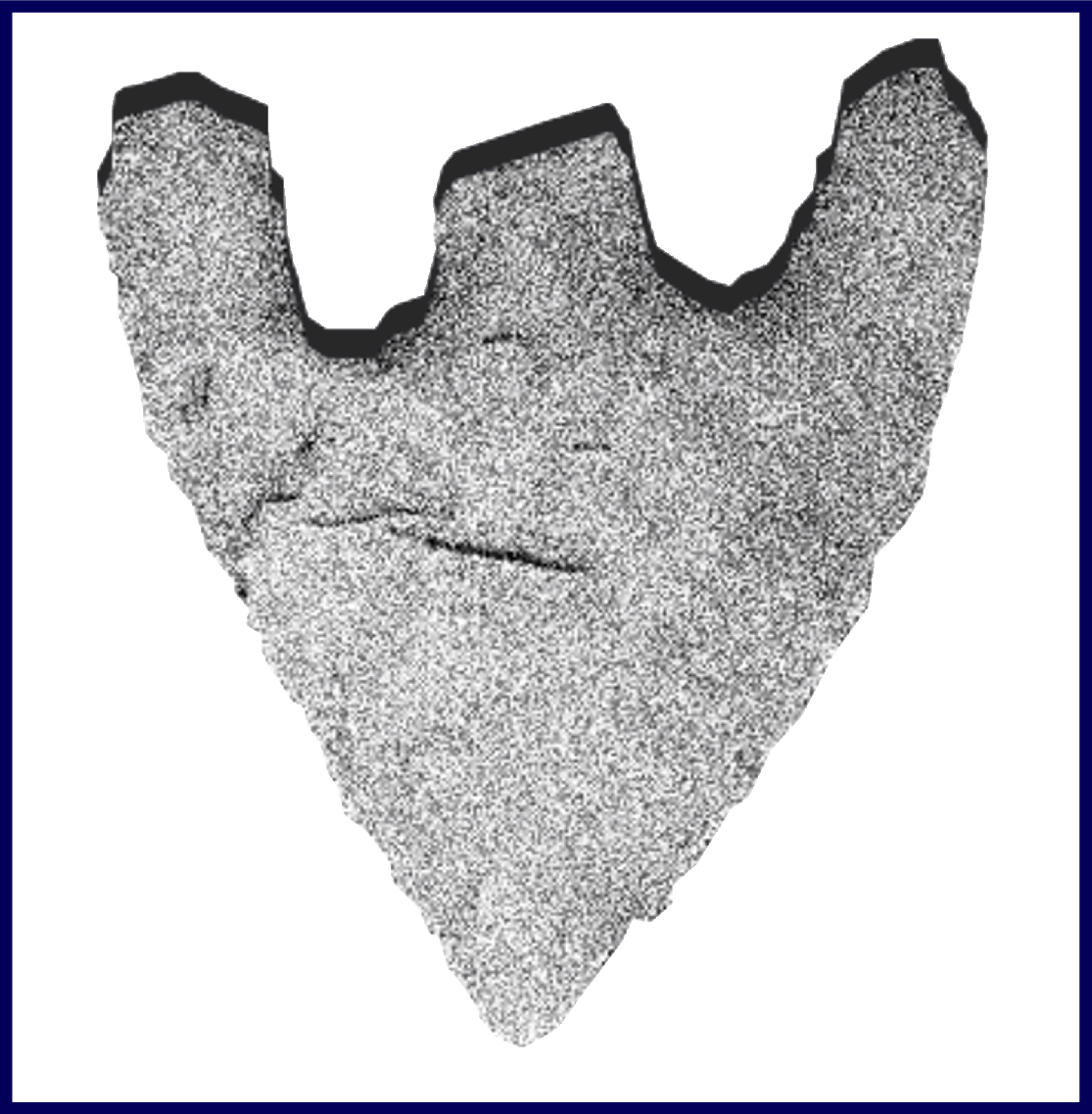
Situated below Yar tor is a kistvaen known as ‘The Money Pit’. The story attached to this particular one concerns a farmer from the Poundsgate area who by all accounts was a kind and friendly soul. One night he had a dream in which he saw the kistvaen loaded with money. Taking this for a divine omen the next morning he rushed to the ancient burial chamber with a crowbar and shovel. Filled with the expectation of riches and fame he set to prising open the old chamber. As the steel bar bit into the rocks a huge raven circled overhead. Its ‘cawing’ seemed to be urging him on. The muscles in his back were tearing as he managed to get some leverage under the huge capstone. With a final huge push the lever began to lift the coffin lid, as it did so a rush of air blasted out from the widening gap, it smell was fetid as if coming from the very depths of time. Slowly the cover slid back revealing a small chamber lined with flat slabs. Peering down into the tomb’s dark recesses he could see nothing. Frantically he began to scrape away the impacted peat. “There has to be some treasure in here” he yelled. The huge raven was now perched on a nearby rock. The farmer could see the reflected sunlight glinting amidst the dark black pools of its eyes. It seemed to be mocking him and its guttural croaking sounded as if the bird was jeering at him. He dug deeper and eventually his fingers touched upon a small, smooth object. It was a small piece of flint shaped in the form of a heart he slipped it into his pocket and made off back to his farm, the thoughts of new livestock, a fine horse and rich clothes soon sank from his mind.
From that day, the old yeoman underwent a complete personality change. No longer was he the ‘Jolly Farmer’ but instead became mean, morose and bitter. Soon all his friends began ignoring him because some time or other they had felt the lash of his savage tongue. His eyes had taken on the same dark, angry look as that he saw in the raven on the fateful day he disturbed the tomb. Life became dull and stagnant and every waking moment he could smell that same fetid stench that had wafted out of the grave.
About a year later his young son found the heart shaped flint and took it outside to play with it. Children being children the game was soon over and having lost interest in the flint it was discarded. That very same day the farmer reverted back to his old jovial and kind self. It was then obvious what had caused the mysterious character change and a lesson was learnt by all.

The Money Pit – July 2007.
The Money Pit is a kerbed cairn which is sited at the terminal of a triple stone row. The stone row is difficult to find and has suffered considerable damage. The actual kerbed cairn was totally ransacked in the 1860’s and Hemery put the blame squarely on the shoulders of a man “of simple intellect named Edward Caunter“, (Hemery, 1983, p.529). Originally it had a close-set kerb of small slabs that surrounded the kistvaen. Today all that remains of the kist is one side and an end slab of the internal ‘lining’. these lie below the displaced kistvaen covering slab, as is the case with many kists the covering cairn stones have completely disappeared, (Butler, 1991 pp. 126-7).
It is interesting to see that the treasure was a ‘flint heart’. This does give the story some credence as the original kistvaen probably dated to the early/middle Bronze Age and where grave goods are found they are normally flint arrowheads or fragments of beaker shaped pottery. It is a known fact, as Parker Pearson points out, (2000 p.92), that in the Bronze Age a new stile of triangular tanged and barbed arrowheads replace the earlier Neolithic leaf shaped ones. The flint depicted below is not of Dartmoor origin but it is of the same time period and demonstrates how, when inverted, an arrowhead could be described as a ‘heart’.

Flint does not naturally occur on Dartmoor so any finds are imported, this means if they are found in a burial context they were deliberately placed there. Here again we see the warnings given about grave robbing and disturbing the tombs of the ancient ones. It is also notable that a flint heart was described as ‘treasure’ because when it was originally deposited it would have been a very valuable item.
There is another ‘Money Pit’ that is connected with buried treasure and that can be found on Oak Island and involves secrets which are said to encompass pirates, Knights Templar and many deaths. To find out more follow the link – HERE

Butler, J. 1991, Dartmoor Atlas of Antiquities Vol. One, Devon Books, Exeter.
Hemery, E. 1983, High Dartmoor, Robert Hale, London.
Parker Pearson, M. 2000 Bronze Age Britain, Batsford, London.
Baring Gould, S. 1982. A Book of Dartmoor. London: Wildwood House Ltd.
Clark Hall, J. R. 2004 A Concise Anglo-Saxon Dictionary, Canada: Cambridge University Press.
 Legendary Dartmoor The many aspects past and present of Dartmoor
Legendary Dartmoor The many aspects past and present of Dartmoor

One comment
Pingback: Red River Dialect Share New Video for “BV Kistvaen” and February Tour Dates | Paradise of Bachelors